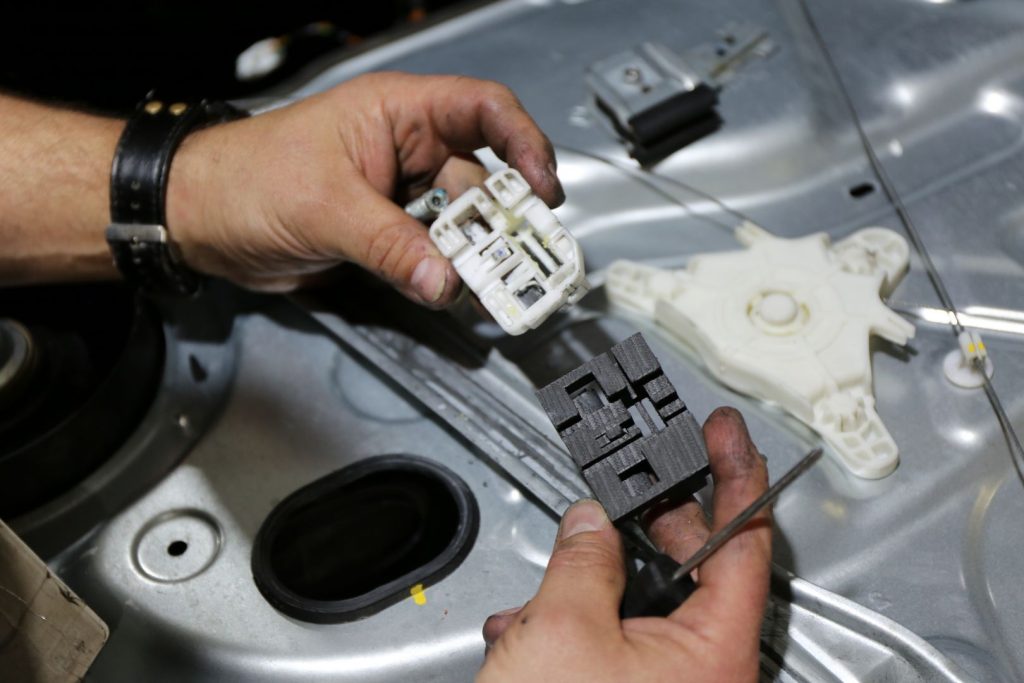The automotive industry is entering a phase of rapid change. We are facing the greatest level of technological disruption seen since the inception of cars and the future of motor trades has two clear paths; innovate and succeed in the new era of technology, or proceed with business as usual, and become obsolete.
One of the biggest disruptors already making enormous strides in the automotive industry is 3D printing. 3D printing is hugely beneficial to recreating or reproducing car parts that are stronger, lighter, environmentally friendly and more cost efficient. And the MTA Institute jumped at the opportunity to get up-close and personal with 3D printing when an opportunity presented itself in the form of a Hyundai repair.
When an electric window stops working in a Hyundai, it is a fairly safe bet that a component of the window regulator has broken. Yet despite the component being smaller than the palm of your hand, the entire panel needs to be removed and replaced creating a great deal of unnecessary waste and costing upward of $400 in repairs. But with the MTA Group launching the first automotive innovation hub in Australia (MTAiQ), the chance to get innovative with the repair was irresistible.
A quick google search of the component’s dimensions and an hour of 3D printing, the part needed for the repair was produced by 3D Space Labs (3DSL), our on-site experts in 3D scanning and printing. Stronger and lighter than the nylon original, the 3D copy was built from nylon reinforced with carbon fibre and cost approximately three dollars in materials to produce.
Marcello Riotto, Operations Manager of the MTA Institute, took the lead in the repair and over the space of an hour dismantled the door/window structure, discovered the broken component and replaced it with the 3D copy. Using trial and error and learning on the go, the repair was simple in theory, easy to execute and proved to be very successful.
“The MTA Institute is committed to engaging in forward-thinking approaches to technology and ensuring our students are constantly learning and evolving with the ongoing changes in the motor trades,” said Marcello.
“3DSL is already turning car manufacturing on its head and the opportunity for the MTA Institute to be involved in experiencing the benefits of 3D printing first hand is very exciting for the students and trainers alike.
“Not only was a huge amount of waste avoided, but using 3D printing for the repair saved hundreds of dollars in car parts and labor and the utilisation of this technology is without question, going to be a huge part of the automotive industry’s future.”
In fact, businesses from around the world are already using the method of designing and printing 3D car parts to replace and streamline a vehicle’s repair process to great success. Local Motors a disruptive tech and automotive company that designs and builds vehicles has said that the use of streamlined 3D printing has resulted in a reduced tooling costs by 50 per cent and reduced overall production time by 90 per cent.
3DSL provides industrial 3D solutions to keep you at the forefront of product development technology. Find out more here.
For more information on MTAiQ – Australia’s first Automotive Innovation Hub visit www.mtaiq.com.au
23 Jan 2018


